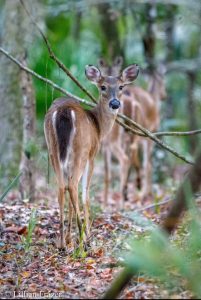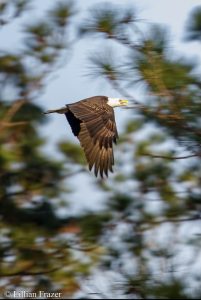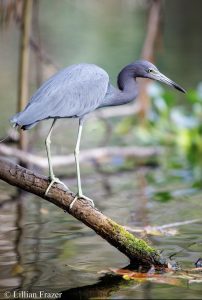A photographer’s lessons on Florida wildlife by Liam Cassedy
The following are pictures and responses by Lily Frazer, 18, Female, a high school friend.
Image 1

I love nature. I see the world is way too busy and there is too much noise. The woods is where I escape this. I love nature because I am able to bond with the earth and the animals. I take photos of the wildlife because I can see in more detail how beautiful they truly are. In this specific photo is what appears to be three deer, one fawn and two females. I remember them strolling by me and this one looked back because it heard my camera. This photo means a lot to me because it reminds me of the time in my life. I am a young human being led around by those who have already experienced life. It is only a certain amount of time before I am on my own and ready to raise a child like my parents.
Image 2

This photo was taken in Christmas Florida on a nature reserve my mother told me about. I took this photo about a mile into the trail. This is of course our country’s national bird, the bald eagle. I took this picture right after it had missed grabbing a fish from the water. I always feel a great power when I am in the presence of bald eagles. They appear very stoic, which is a great way to live life. In this case, it had missed the fish in the water, and kept going on its way to try again. It did not get upset when it failed, it did not squawk, it simply tried again until it was successful. This is a great lesson in life. We should not be upset when we fail, but continue to try again and again until we get it.
Image 3

This is a photo of a little blue heron hunting. It must have sat on that small river branch for 20 minutes before catching anything. This is very humbling to me because it is not the biggest or most predatory bird and it is still doing what every other bird has to do. This bird has to wait, just like anyone else, to execute an opportunity. Everyone is able to do the same amount in their life, it just might be harder for others. A great blue heron may have been able to catch fish or hunt better than this because it is much bigger. But at the end of the day, we all have to provide for ourselves regardless of size, strength, or gender.
The theme I gather from her responses are how we can create lessons and meaning from nature.
My response to Lily’s responses-
Lily seems to be able to draw important lessons from what appears to be a normal photo of animals. What was quite striking to me is she creates these lessons from a still photo, but she makes us realize how the animal got in that situation. The animals do not just exist in that moment, but had to do something to get in that moment. I feel as if people just look at everyone else’s specific moment in life and judge them based off of it. You have to understand how they got in that situation first. What I also drew from this is that nature has to do everything we do as humans. We have to sleep eat, have children, and figure out what to do with our day. I think people think animals exist just so we can see them. Going back to the student poem “The World is not Our Lawn”, by Seva Reilly, I think this can be expanded upon. We never really see animals when we live our everyday life. in personal experience I see more roadkill then living animals. We also only see 4 different types of animals running around- Squirrels, possums, raccoons and bunnies. Where did all the other animals go. We drove them out of their homes and now they are forced to live somewhere else, or they continued trying to live where they once where and died or are having a tough time surviving because there is not enough food. The world is not our lawn helps bring more meaning into what life is all about- living in harmony.
Media Attributions
- IMG_0335
- IMG_0337
- IMG_0336

